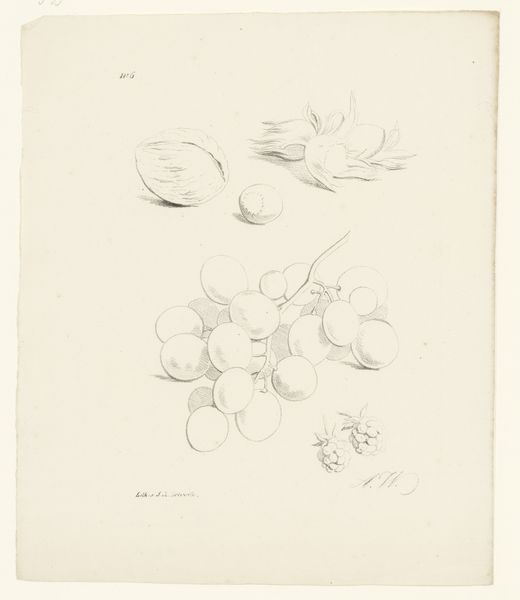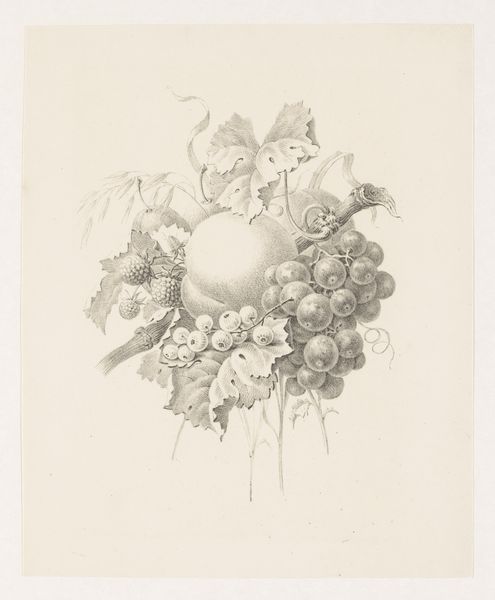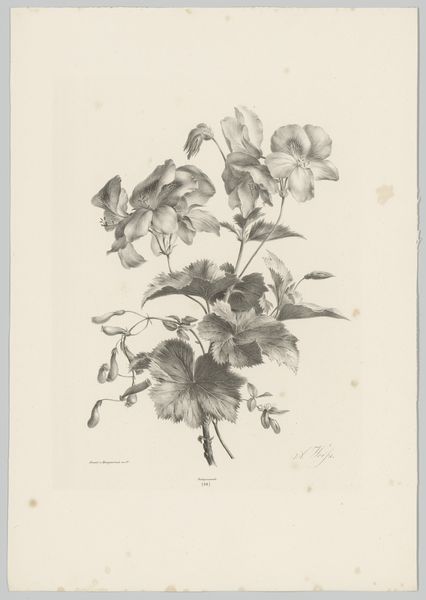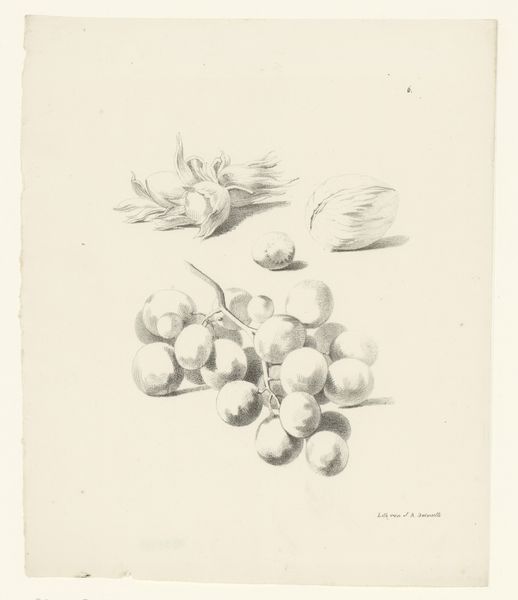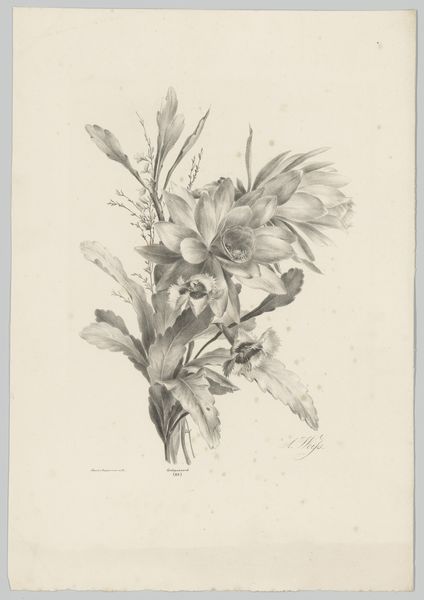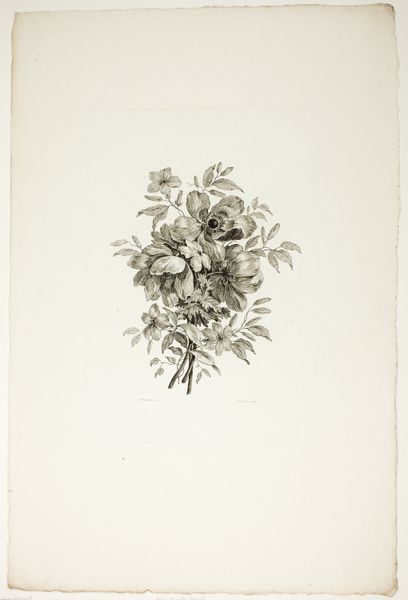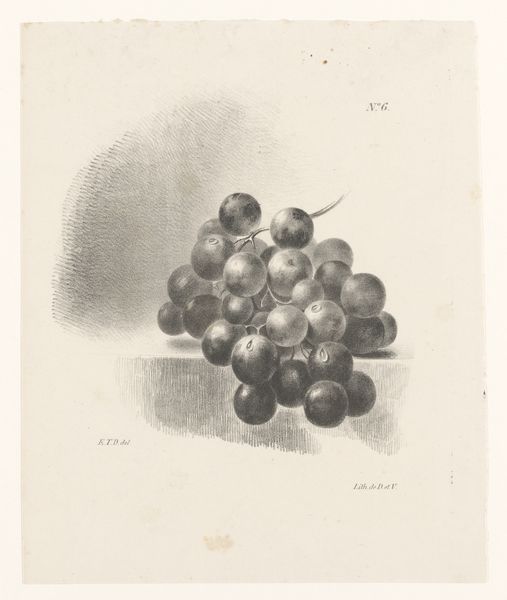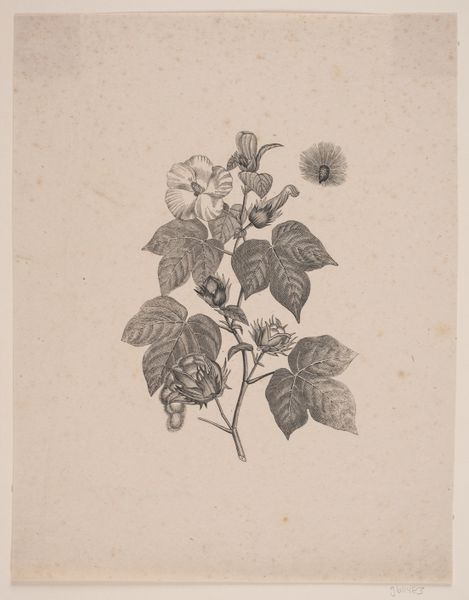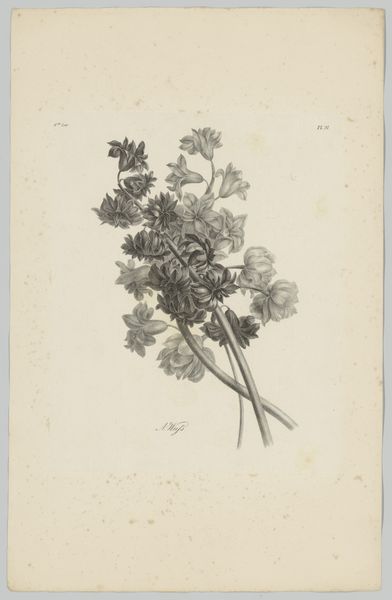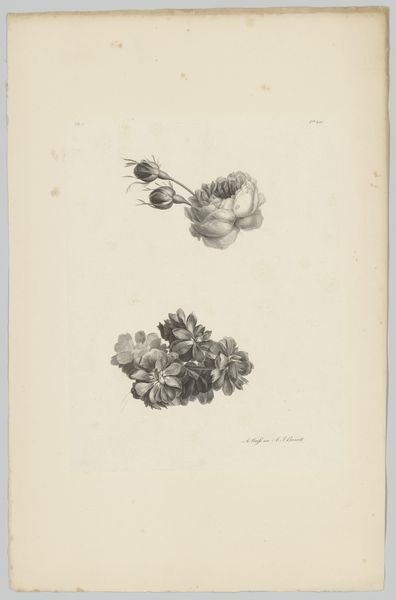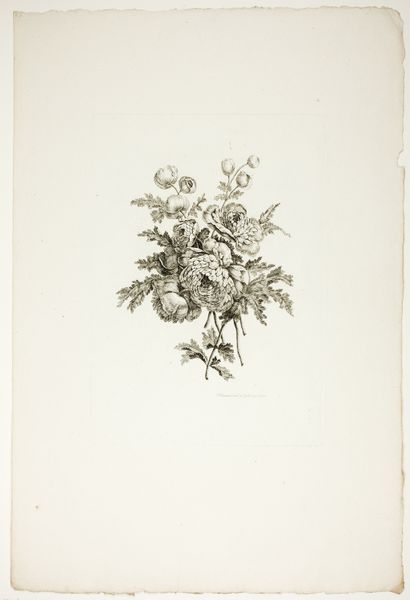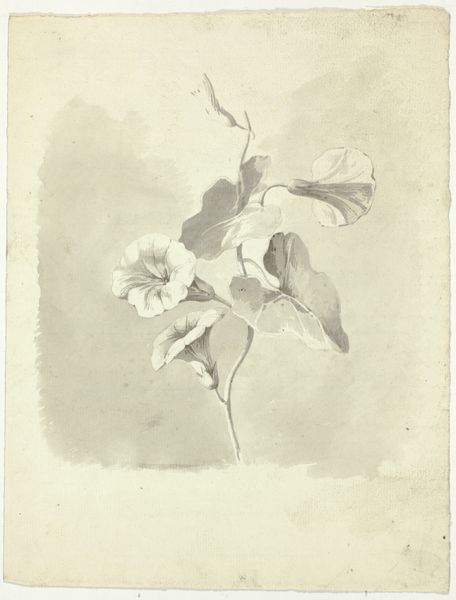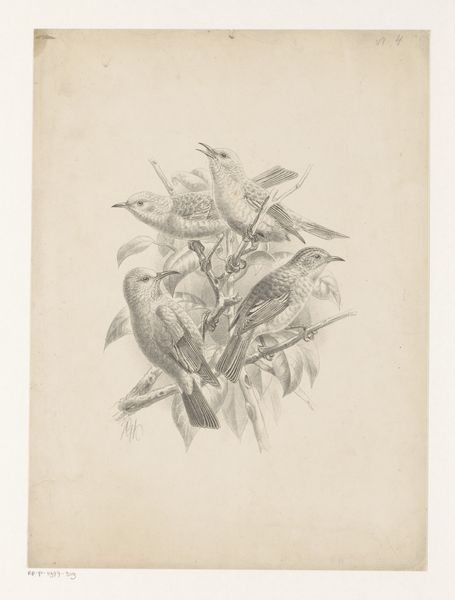
drawing, print, graphite
#
drawing
# print
#
graphite
#
watercolour illustration
#
academic-art
#
botanical art
#
realism
Dimensions: height 255 mm, width 210 mm
Copyright: Rijks Museum: Open Domain
Editor: Here we have Elise Thérèse Daiwaille’s 'Druiventros,' created sometime between 1824 and 1881. It's a drawing and print rendered in graphite, currently housed at the Rijksmuseum. There’s almost a photographic quality to it, the grapes seem so tangible. What strikes you most about this work? Curator: It’s precisely that tension between the illusion and the tangible that interests me. We see 'Druiventros' operating within a very specific social context. The rise of botanical illustration wasn’t just about scientific accuracy, but also about display, wealth, and the controlled manipulation of nature. How does the medium – graphite, a readily available material – play into this? Editor: That's interesting. Graphite feels very accessible, less precious than paint. Curator: Exactly! Daiwaille uses a relatively humble material to depict something historically associated with luxury and cultivation. Think about the labor involved – the graphite mined, processed, transported, then meticulously applied to create this illusion of abundance. The drawing becomes a commodity itself, reflecting cycles of production and consumption. Where do you think it challenges traditional art categories? Editor: I suppose because it blends artistic skill with scientific observation. Is it purely aesthetic, or does it also have a practical, documentary purpose? That makes me consider its function very differently. Curator: Precisely. And consider who this artwork might have been *for*. The act of creating it, of capturing nature with graphite and printmaking, transformed the natural world into something easily transported and owned. Editor: I hadn’t really considered the economic aspects before, focusing mostly on the beauty of the illustration. Curator: Looking at the material processes shifts our focus, doesn't it? It changes how we value both the grapes and the representation of them. Editor: It does, dramatically! Thanks for pointing out those different layers of interpretation.
Comments
No comments
Be the first to comment and join the conversation on the ultimate creative platform.
